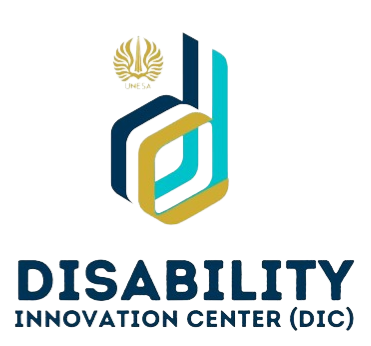History of Unesa Disability Inclusion Metric
Initiating inclusive services for people with disabilities in universities is not viewed as an option anymore, but as a mandate that must be carried out in supporting the realization of the education rights for people with disabilities, as stated in government law No. 8 of 2016.
Various regulations have been launched to facilitate people with disabilities, including the emergence of schools' inclusion from primary education to higher education. These aim to provide opportunities for all students who have disabilities but have potential in intelligence or unique talents to attend education or learn in an educational environment and students in general.
Therefore, it is necessary to make a driving organ in every university to accommodate all services and accessibility of the disabled group. The tri dharma as the main goal of higher education must lead and adjust to the needs of the disabled group so that they are not marginalized in the campus community.
This condition triggers higher education managers to open the door as wide as possible to provide opportunities for new student admissions through special entrance services for groups with disabilities following their chosen study program, which seeks to organize supporting facilities for their special learning needs. The efforts made by these universities contribute to the Sustainable Development Goals (SDGs) or sustainable development goals that universities can carry out through the Tridharma of Higher Education (teaching, research, and community services). It can be done by providing a supporting and friendly education environment for people with disabilities, becoming a facilitator and catalyst for public involvement, dialogue and cross-sectoral action, community advocacy, and increasing stakeholder commitment. Therefore, it provides an opportunity for the disability group would be a real action for SDGs point 10 in reducing inequality.
By looking at a phenomenon like this, it is necessary to have levers that can appreciate the efforts that have been made by public and private universities worldwide. It can be through a ranking program related to the concern of universities towards disability groups, which so far, it is felt that there are no universities that have initiated the idea.
Therefore, Universitas Negeri Surabaya (Unesa), through the ranking unit, designed a disability inclusion metric rating model that focuses on performance appraisal from public and private universities related to the preparation of all physical and non-physical facilities, other supporting services related to Tridharma, and supporting the academic atmosphere for disabled groups so that they will become independent people in developing their potential.
Unesa itself is a university with several advantages, one of which is, having an education course related to disability. Concrete steps that have been taken are starting in early 2021, and based on the Rector's Decree No. 165/UN38/HK/KP/2021, a Clusterization and Ranking Unit for Higher Education has been formed. In addition, Unesa also has had a Centre for Disability Studies and Services (PSLD) since December 12, 2013. Hence, in 2022, Unesa released the Unesa Disability Inclusion Metric. Furthermore, Unesa has also recognized national and international ranking systems, as shown in the following figure.
Several domestic ranking systems are the Kemendikbudristek IKU League, UI Green Metric, and UNS Jawa Metric. The various overseas ranking systems include Times Higher Education (THE), Quacquarelli Symonds (QS), Scimago Institutions Ranking (SIR), Alper-Dodger Scientific Index, Webometrics, 4ICU (Unirank), and MONSIEUR.







